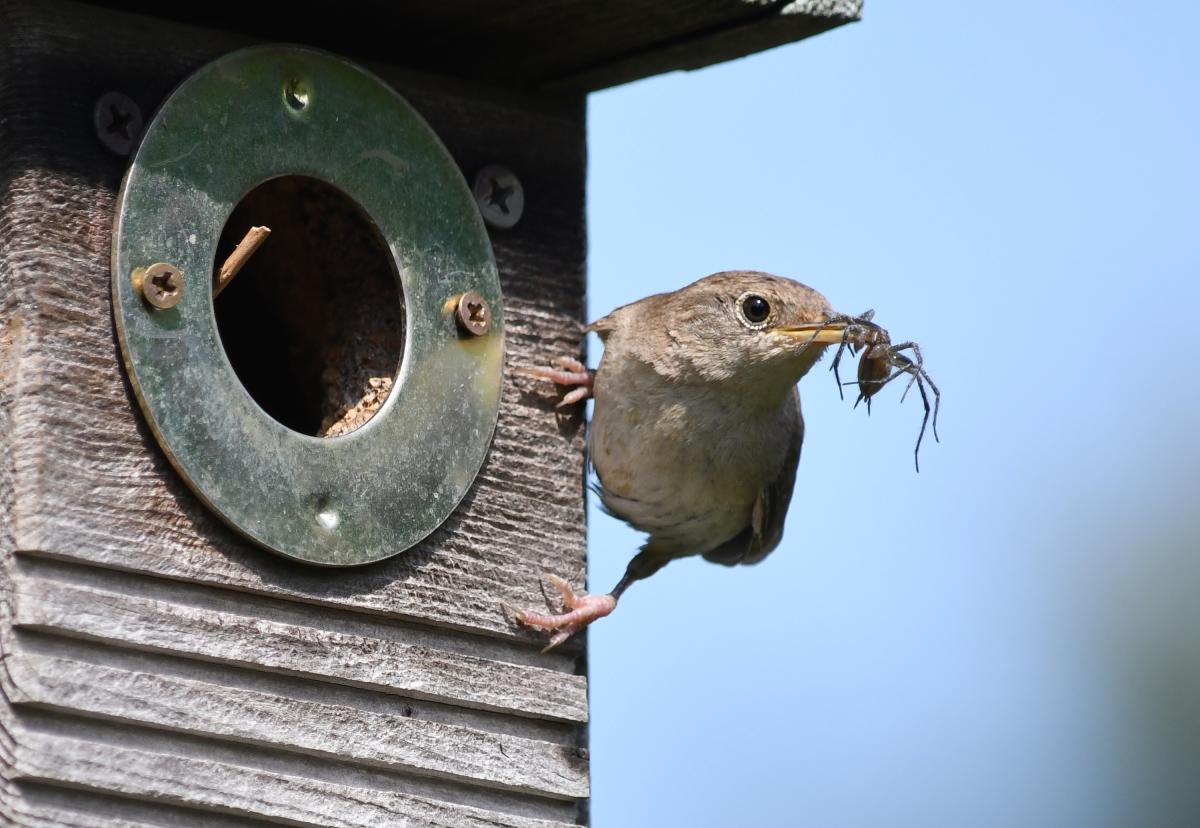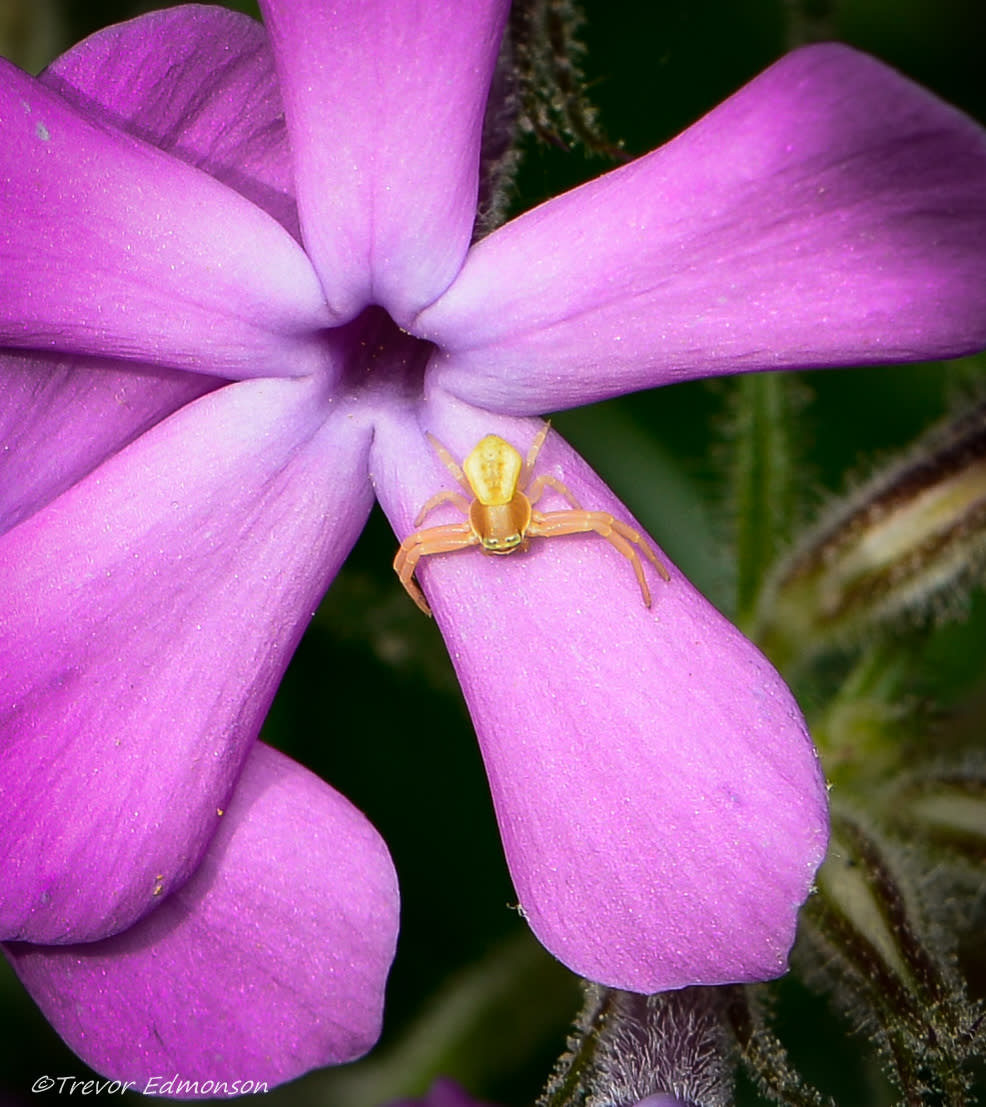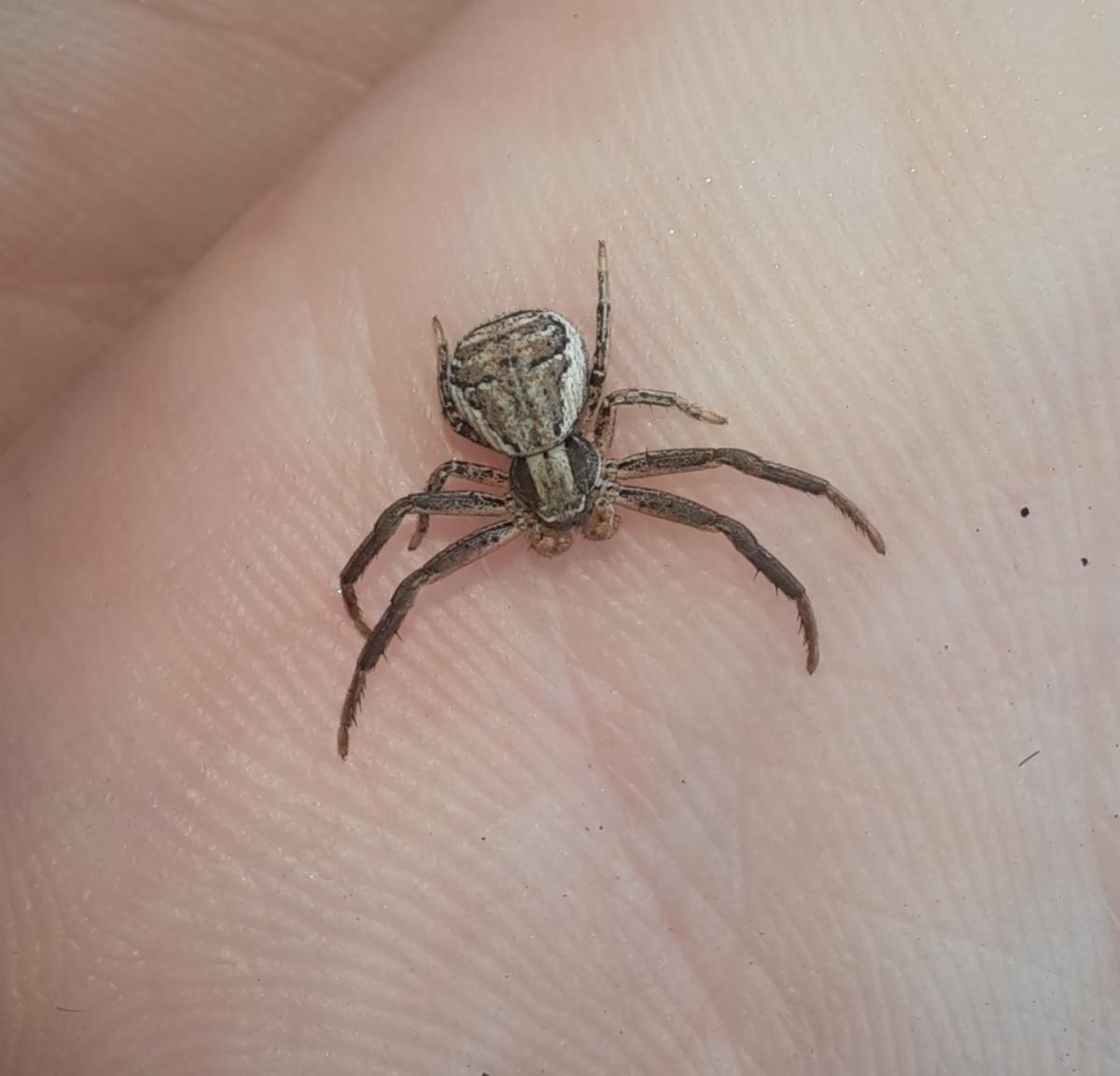Did you know that the first week of April is National Be Kind to Spiders Week? To be kind to spiders (that is, to resist all instincts to squish them), one must first appreciate spiders, which admittedly can be hard to do when you are a little nervous or even terrified of them – known as arachnophobia. But there is a lot to love about these eight-legged wonders and less to be nervous about than you might think.

First off, we can start thinking of spiders less as predators that grab and eat things, and rather think of them as prey, eaten by other things. As it so happens, the second most important food source for songbirds (after insects) is spiders! In his 2007 book Bringing Nature Home, Doug Tallamy writes about a study identifying what foods wrens were bringing to their chicks; he found that more than half were spiders. Tallamy reports that ornithologists agree that spiders are an important and critical component of adult birds’ diets and the food that they feed their chicks.

And some bird species don’t just limit their spider use to just food. Hummingbirds not only eat spiders, but they also use the fine silk strands in the making of their nests. Goldfinches are known for incorporating spider webbing into their nests as well.
Luckily for birds, there is an amazing variety of spiders in the world. According to the National Park Service, there are nearly 60,000 species of spiders worldwide. In North America, there are approximately 3,400 different spider species. In Indiana, the Department of Natural Resources estimates that there are approximately 400 species of spiders. Of these, most are harmless to humans. Notable exceptions include the brown recluse and the black widow, which can inflict serious harm to humans.

On the Kankakee Sands prairie, some of our most common spiders are the orb weavers, crab spiders, wolf spiders, and jumping spiders, all of which sound intimidating but are harmless to humans. Now exactly just what are all these spiders doing on the prairie? Eating insects! The Natural Park Service reports that a single spider can eat about 2,000 insects per year! As a group, spiders consume more insects that birds do.
At the Kankakee Sand greenhouse, where it’s warm and cozy this time of the year, we do have a fair number of jumping spiders. Often when taking the plant pots out of storage and setting them up to fill with soil, a little jumping spider will pop out. Jumping spiders are well named in that they do not create webs to catch their prey, but rather they leap and catch their prey with their forelegs.
Jumping spiders used to alarm me greatly! However, I have found that the following tactic has allowed me to appreciate and respect the little jumping spider – I simply sit and watch. When alarmed, most spiders will run a short distance, then they will stop and assess the situation. (That’s when I imagine the spider saying “Hi!”.) It might turn and look left, then turn and look right, and then just settle in to see what will happen next. (And that’s when I imagine us having a little conversation about the weather.) If I do nothing, the spider may eventually get bored and wander off in search of a safe and comfortable place to settle in until it is hungry again.

I’ve learned that simply sitting and observing allows me to understand and predict how a spider might act and react, thus allowing me some comfort with how the scene may play out. And feeling comfortable is important as we lean into spider appreciation. I’ve had so many nice conversations with spiders over the years, that now I feel comfortable putting my finger out, allowing it to crawl on me, then taking the jumping spider outside to live its life out in the prairie.
A fun note about our greenhouse is that along with jumping spiders, we also have visiting house wrens that come in for spider snacks regularly. They sing to us from atop the heater when the doors of the greenhouse are open. Wrens do love to eat spiders!

A great way to spend time with spiders in a safe and educational environment is to attend one of Robin Allen’s family-friendly spider programs. Our family attended one of her presentations several years ago at Kankakee Sands. It was great fun to learn about the spiders and then have the opportunity to view her pet jumping spiders up close, and even hold one if we wanted. Robin’s next outreach event with her adorable pet jumping spiders will be held during the Animal Outreach Day at Olivet Nazarene University in Bourbonnais, IL, later this month. To find out more, visit their Facebook page at www.facebook.com/ONUAnimalOutreach/.

This month, as the migratory songbirds are making their way from their overwintering grounds in the south back up to the Midwest, we can remind ourselves that little spiders are here and ready for them, and we can feel good about that! We don’t always need to think of the spiders are scary and predatory. Instead, we can think of them as prey, sustaining the next generation of songbirds. Not only are they not worth squishing, they are worth appreciating!

